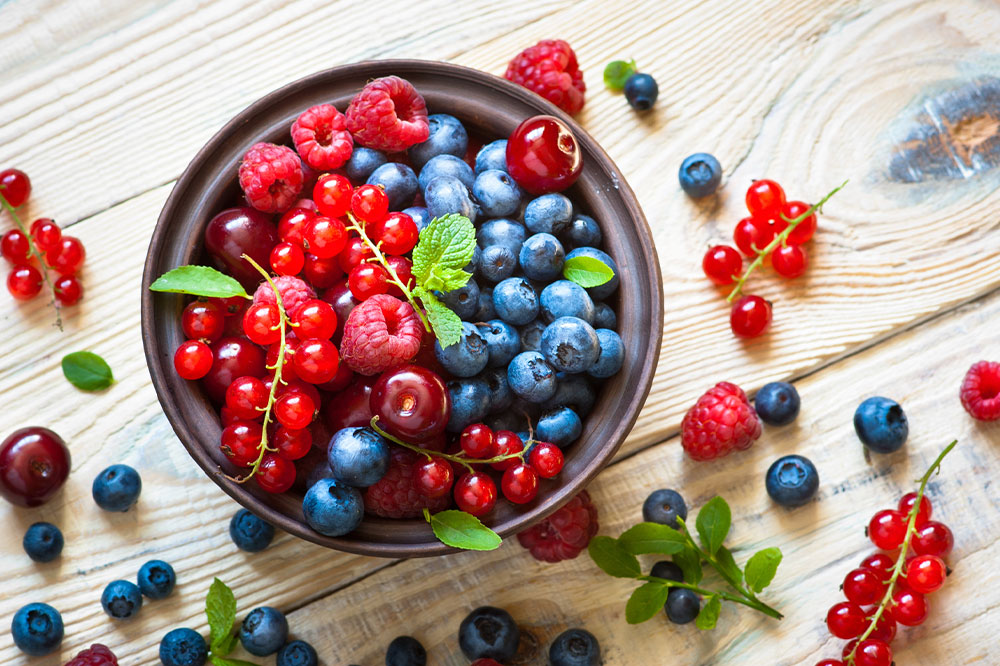10 foods that can help relieve migraine

Migraine is a complex neurological condition causing symptoms like throbbing headaches, nausea, and sensitivity to light and sound. Migraine episodes can last for hours or days, interrupting daily routine. While there is no one-size-fits-all solution, seeking treatment, recognizing and avoiding triggers, making a few lifestyle changes, and making better food choices can also help one manage the condition. So, here are a few foods to consider when dealing with migraines:
Ginger
The active compound in ginger, gingerol, possesses powerful anti-inflammatory and analgesic properties. These properties make ginger an effective natural remedy for alleviating migraine pain. One can add ginger to meals or teas.
Magnesium-rich foods
Magnesium is crucial for neurotransmitter regulation and maintaining healthy blood vessels, making it essential for alleviating migraine symptoms. Foods like almonds, spinach, avocados, and dark chocolate are rich in magnesium, so they can help regulate blood vessel constriction and dilation.
Fatty fish
Fatty fish like salmon and trout are rich sources of omega-3 fatty acids, which exhibit powerful anti-inflammatory properties, potentially reducing the frequency and intensity of migraines. For those who do not prefer fish, flaxseeds and walnuts are great plant-based alternatives.
Leafy greens
Dark, leafy greens such as kale, spinach, and Swiss chard are excellent sources of magnesium and riboflavin (Vitamin B2). Riboflavin has demonstrated potential in reducing the frequency of migraines. Adding these vegetables to meals can ensure one gets these two essential nutrients.
Peppermint
Peppermint serves as a natural muscle relaxant because of its menthol content. Its analgesic properties can help ease migraine-related discomfort. Additionally, inhaling peppermint oil may alleviate nausea, a common symptom of migraines.
Whole grains
These contain CoQ10, which acts as an antioxidant and aids in cellular energy production. It is also believed to reduce migraine frequency. One can add whole grains like barley and brown rice, which are good sources of this compound.
Foods with vitamin B2
Riboflavin, or vitamin B2, found in dairy products, lean meats, eggs, and green leafy vegetables, is essential for energy production. Research suggests that riboflavin can significantly reduce migraine occurrence, making it a valuable addition to a migraine-friendly meal plan.
Water-rich foods and electrolytes
Dehydration is a known migraine trigger. Replenishing electrolytes and water through foods like bananas, coconut water, and nuts helps maintain proper hydration levels, reducing the likelihood of a migraine attack.
Lean proteins
Lean proteins such as chicken, turkey, and fish help stabilize blood sugar levels. This is useful in migraine prevention since fluctuations in blood sugar can be a trigger for migraines in some individuals.
Berries
Berries, especially dark-colored varieties like blueberries and cherries, are rich in antioxidants that fight inflammation and oxidative stress associated with migraines. Adding these fruits to meals and snacks can be a flavorful and nutritious way to alleviate migraine symptoms.
Foods to avoid
These foods can potentially trigger migraine symptoms, worsening the pain and discomfort. One should avoid or limit the intake of these foods when dealing with migraines:
Aged cheese : Cheese undergoes an aging process that can result in the formation of tyramine, which is a known migraine trigger. Swiss cheese, cheddar cheese, and blue cheese are particularly rich in tyramine and should be excluded from meals.
Caffeine : While caffeine can temporarily relieve headaches, excessive intake of the compound can also lead to migraines. It is important to limit caffeine intake by cutting down on coffee, tea, energy drinks, and chocolate.
Processed meats : Cold cuts, cured meats, sausages, and bacon contain nitrates and nitrites that have been linked to migraines. These chemicals can dilate blood vessels and trigger migraines or worsen existing episodes.
Artificial sweeteners : Aspartame and sucralose, commonly found in carbonated beverages and sugar-free products, have been reported to induce migraines in certain individuals. Opting for natural sweeteners like honey or stevia can be a wiser choice.
MSG : Monosodium glutamate, commonly found in Chinese food, processed snacks, and food additives, is a flavor enhancer that may lead to migraines in some individuals. Reading food labels and opting for MSG-free alternatives is recommended.
Citrus fruits : Oranges, lemons, limes, and grapefruits contain high levels of citric acid and histamines, which can trigger migraines. While these fruits have numerous health benefits, people prone to migraines should be cautious and consume them moderately.
Onions : Onions are known to contain a substance called tyramine, making them a potential migraine trigger. If one does not want to eliminate onions entirely from meals, one can try reducing their intake to manage migraines.
Gluten : While migraines are not directly caused by gluten, studies have shown a possible link between the two. So, those with gluten sensitivity or celiac disease may experience migraines as a result. It can be beneficial then to avoid gluten-containing grains like wheat, barley, and rye.
Artificial food Additives : Food dyes, especially red and yellow ones, have been identified as potential migraine triggers. So, one should consider avoiding processed foods, sodas, and candies that contain artificial food colorings.
Understanding migraines
Migraine has a variety of triggers, common culprits being hormonal fluctuations, stress, certain foods, inadequate sleep, and environmental factors. Typically, a migraine episode manifests as severe, throbbing headaches, typically on one side of the head, lasting from a few hours to several days. Additional symptoms may include nausea, vomiting, sensitivity to light, sound, and smells, as well as visual disturbances known as auras. Certain foods, treatment options, and lifestyle changes can help relieve these migraine symptoms.
By incorporating migraine-relieving foods and avoiding potential triggers, one can take proactive steps toward managing and reducing the frequency of migraines. Here, it is important to remember that individual responses to foods may vary, so one should consider consulting a healthcare professional for personalized advice and treatment. Further, upon consulting a doctor, one may consider trying an elimination food plan to determine and avoid food-based triggers to reduce the frequency of migraine attacks.


